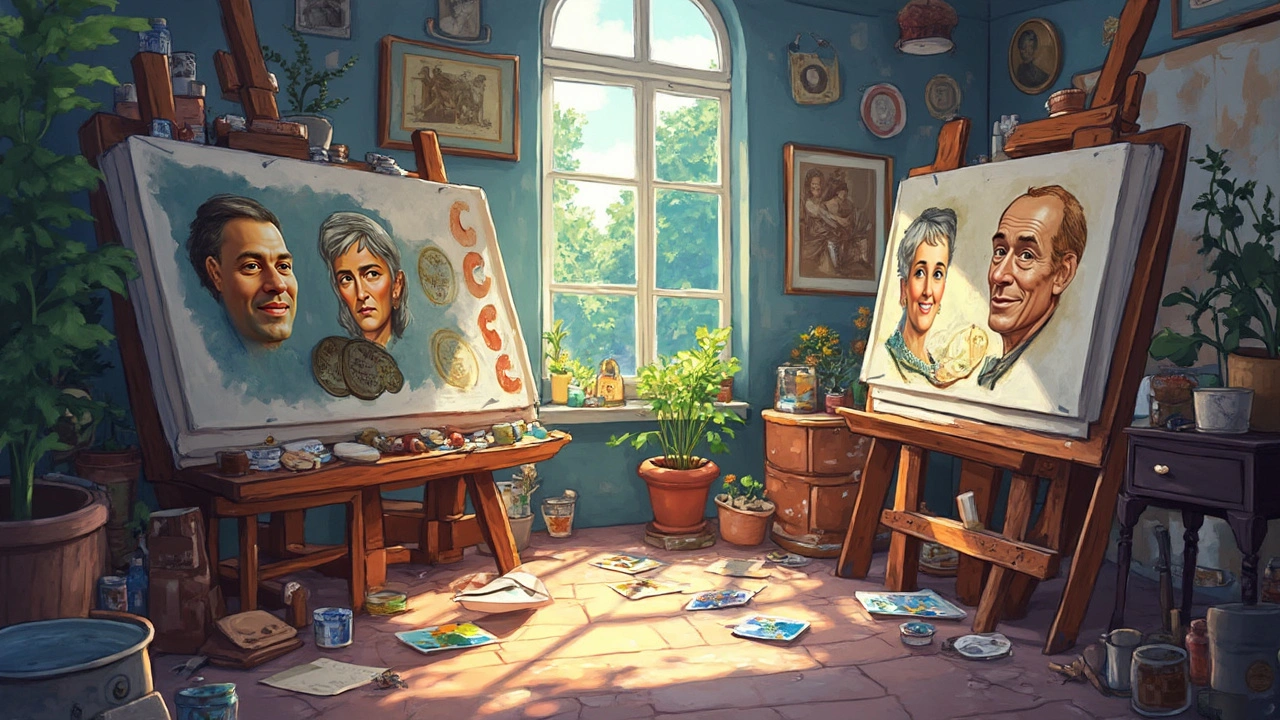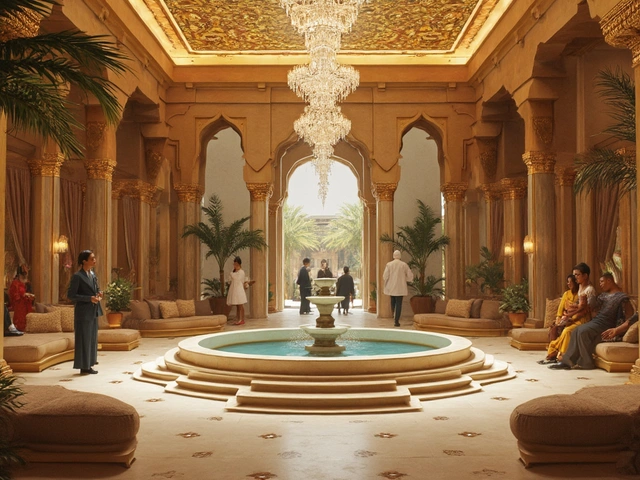If you've ever looked closely at a 2 euro coin, you might have noticed that the face on it can change depending on where it came from. Unlike most currencies, which have a standard design, the euro coins allow each country in the Eurozone to place their own mark on the 2 euro coin. This means there are a variety of faces and designs out there, turning an everyday object into a tiny piece of art and history.
Each country has chosen distinct imagery that holds cultural or historical significance. For example, in Greece, you'll find the face of a Spartan soldier, highlighting their rich history. In Italy, you might spot Dante Alighieri, the famous poet. It's like getting a little history lesson every time you use cash. Interested in knowing more about how these faces were chosen? Hang tight, because we're just getting started.
- Introduction to the Euro Coin
- Design Variety Across Europe
- Spotlight on Unique Faces
- The Story Behind the Faces
- Tips for Collectors
- Cultural Impact of Coin Designs
Introduction to the Euro Coin
The 2 euro coin is part of a fascinating European adventure that began with the introduction of the euro currency back in 1999 for non-cash transactions and later in 2002 for cash transactions. It was a significant step for economic integration across Europe, creating a unified currency for 19 of the 27 European Union member countries as of 2025. This move not only made travel and trade easier across borders but also gave birth to coins that carry a piece of each nation's identity.
Now, you might ask, why is there a variety of designs on these 2 euro coins? The answer is rooted in the concept of "unity in diversity." While the euro notes are the same across all these countries, each Eurozone nation can mint its own designs and faces on the national side of the coins, including the 2 euro. It's kind of like a country putting its stamp or signature on their portion of this unified currency.
The Purpose Behind Each Design
The idea is to reflect the unique culture, history, and sometimes the contemporary values of a country. So, when you spot different faces on these coins, it's like catching a glimpse of what that nation holds dear. For instance, Spain highlights King Felipe VI, marking their royal history, while Germany shows an eagle, representing its emblem of sovereignty.
If you’re interested in knowing how many different 2 euro designs are out there, you might want to brace yourself. There’s a plethora, each with its own story, and sometimes even a limited edition design that marks a special occasion or significant person. Now that's a collector's dream!
The Other Side of the Coin
Don't forget, the flip side of any euro coin remains the same, depicting a map of Europe, showing the unity that this currency represents. This common side jointly symbolizes the economic integration that all these countries share.
For those curious about collecting or understanding the stories behind these coins, you're in for a treat. Exploring these coins opens up a little window into Europe's history and shared values through the lens of currency.
Design Variety Across Europe
One of the coolest things about the 2 euro coin is how it brings together so many different cultures on such a small surface. Each Eurozone country has the freedom to pick its design, which means you’re looking at a miniature art gallery every time you pull out your change. This keeps things exciting and kind of makes you want to start collecting these coins, doesn’t it?
Faces Across the Coinage
Let’s take a closer look at some of these designs. In Germany, of course, the Brandenburg Gate is showcased, a symbol known worldwide. Meanwhile, Spain regularly features King Felipe VI, showing a preference for their monarchy. Flipping the coin to Ireland’s designs, they favor the Celtic harp, a recognizable symbol of their cultural roots and national identity.
Now, if you're in France, keep an eye out for the tree of life which symbolizes liberty, equality, and fraternity. Each of these images reflects not just an aesthetic choice but a part of the national story, like tiny ambassadors carrying their message around the continent.
Beyond the Usual Faces
But it's not all about famous faces and landmarks. Some coins celebrate significant historic anniversaries or events. For instance, Belgium has issued coins for the World Day of Social Justice, spotlighting not just national pride but global good.
Spotting Collectible Coins
For those keen on collecting, paying attention to these designs can mean the difference between spotting a rare coin or just adding one more into your travel fund. Certain limited-edition and commemorative coins can be worth way more than their face value for the collector.
Thinking of starting your own collection? It’s not just about the euro and its designs; it’s about diving into the stories they tell, one coin at a time. Keeping your eyes peeled and your wallet ready—you never know what treasure might be hiding among your loose change.
Spotlight on Unique Faces
The variety in designs across 2 euro coins is what makes them so fascinating. Some countries take the opportunity to showcase their most iconic historical figures or symbols that represent their national identity. Let's look at some of the standout designs you might come across.
Italy's Tribute to Dante Alighieri
On Italy's 2 euro coin, you'll find Dante Alighieri, the renowned poet and philosopher, known for 'The Divine Comedy.' His image is a reminder of Italy's rich literary heritage. It's like carrying a piece of the Renaissance in your pocket, connecting modern Italy with its illustrious past.
Finland's Celebration of Nature
Finland opted for a design that symbolically represents its vast, untouched nature. The lighthouse and sea depicted on their coin emphasize the country's deep connection with nature and its coastal geography. It’s a subtle nod to their environmental consciousness and maritime culture.
Greece's Warrior Heritage
In Greece, the 2 euro coin commemorates the valor of ancient warriors with a depiction of a Spartan soldier. This design celebrates their rich history of defense and resilience. For history buffs, it’s like holding a piece of ancient Greek warfare in your hand.
Spain's Artistic Nod
Spain chose to honor its art legacy by featuring an image of Spain’s national writer, Miguel de Cervantes, the author of 'Don Quixote,' on their coins. This pays homage to the cultural impact of literature in shaping Spain's national identity.
These are just a few examples, but the list goes on. Whether you're an avid collector or someone who just loves discovering the stories behind everyday objects, these coins offer a unique insight into each country's pride and history.
Keep an eye out for different 2 euro coins when traveling across Europe. You'll be amazed at the variety and significance each design holds—making even the smallest transactions a rich cultural experience.

The Story Behind the Faces
The 2 euro coin is not just pocket change; it's a celebration of European culture and history. Each 2 euro coin is a blank canvas that countries fill with what reflects their identity and pride. So, whose faces do we actually see?
Greek Heritage
In Greece, the tradition of honoring their ancient culture is strong, and this is evident on their 2 euro coin. They've depicted a Spartan warrior, a nod to Greece's storied past and its influence on Western civilization.
Italy's Cultural Icons
Italy, known for its rich artistic history, chose Dante Alighieri. Dante is a symbol of Italian literature; his work 'Divine Comedy' is a cornerstone of Italian cultural heritage.
How They Choose
So how do these countries decide whose face makes the cut? Usually, it's a public process. Some nations hold design competitions to let citizens submit ideas, while others rely on committees of historians and artists to make the pick. They look for figures or symbols that resonate deeply with citizens and exemplify national pride.
Collecting Coins
For collectors, these variations make the 2 euro coin uniquely attractive. In fact, there are around 300 different designs out there! Collectors might focus on designs from specific years or seek out all the variations from each country. Remember to check your change next time—there might be a rare coin in there!
The diversity of the 2 euro coin designs tells a mosaic story of the Eurozone, beautifully connecting the present to the past. It's a constant reminder that while the euro unites these countries economically, there's still room for their rich, individual stories to shine through.
Tips for Collectors
So, you're thinking of collecting the 2 euro coin, huh? It's a fascinating hobby with a mix of history, culture, and a touch of treasure hunting. Here are some practical tips to help you get started.
Start Close to Home
Begin by checking the coins in your wallet. You might be surprised by the diversity even in everyday change. Each coin tells a story, and collecting from your region can set a solid foundation.
Invest in a Coin Album
Having a coin album dedicated to your collection keeps your coins safe and organized. Plus, it lets you track which European national designs you already have and which ones you're still searching for.
Connect with Fellow Collectors
Joining a community can be invaluable. Look for local coin clubs or online forums where people share tips and swap coins. You never know, you might score a hard-to-find coin through a trade.
Check for Special Editions
Every now and then, countries release commemorative versions of the 2 euro coin. These often celebrate significant events or anniversaries. They might be a bit more challenging to find but add a unique touch to your collection.
Keep an Eye on Coin Shops and Markets
Coins found in circulation might be common, but for rare finds, you might have to hit up specialized shops or flea markets. Always stay aware of the current market value of coins to avoid overpaying.
| Country | Year of Issue | Design Theme |
|---|---|---|
| Germany | 2006 | 2006 FIFA World Cup |
| Finland | 2017 | 100th Anniversary of Independence |
Patience is Key
Don't expect to complete your collection overnight. Part of the thrill is in the chase, finding a rare coin when you least expect it. So, enjoy the journey!
Cultural Impact of Coin Designs
The faces on the 2 euro coin carry more than just historical weight; they play a big part in keeping cultural heritage alive. Each design is like a miniature ambassador for that country's history, values, and even pride. They're not just for looking pretty or artistic. These designs can actually influence how people see a country, bringing out a sense of pride for locals and curiosity among visitors.
A good example is the German 2 euro coin, which proudly shows the eagle, a symbol of unity and strength. This isn't just about tradition. It also connects to modern sentiments of national pride and gives onlookers a taste of what Germany stands for.
Some countries use these coins to highlight important moments or people. Spain chose King Juan Carlos I and then King Felipe VI, which reflect pivotal leadership transitions in their more recent history. It’s a statement about continuity and heritage that says a lot about where the country has been and where it's heading.
Coins as Storytellers
Coins literally put history in your pocket. They share stories about national heroes, architecture, or even flora and fauna unique to the region. For collectors, these coins become a form of cultural exploration and exchange.
Plus, these designs actually spark conversations and questions, especially when tourists encounter them. France, by using Marianne—a symbol of Liberty—continues to impress upon people its core values of freedom and democracy. It’s like a quick cultural exchange right in the palm of your hand!
Economic and Educational Role
There's also an educational aspect. Kids learning about history and geography can see real-life examples on currency, which makes those lessons much more tangible. For the curious ones flipping through their geography books, these coins offer a tiny glimpse into the wider world. And here's a little-known fact: during the launch of the euro, the European Central Bank noticed an uptick in coin collecting, sparking a small but interesting boost in local economies around coin minting.
At a time where digital payments are on the rise, the tangible aspect of coins and their unique designs offer a connection to the past. So next time you receive change, take a look at those 2 euro coins. They might not just tell you how much you have, but also share a piece of the world with you.






